- Call +84 981 237 915 Or Email
- info@nadovatours.com
Main Principles of Vietnamese Food You Should Know
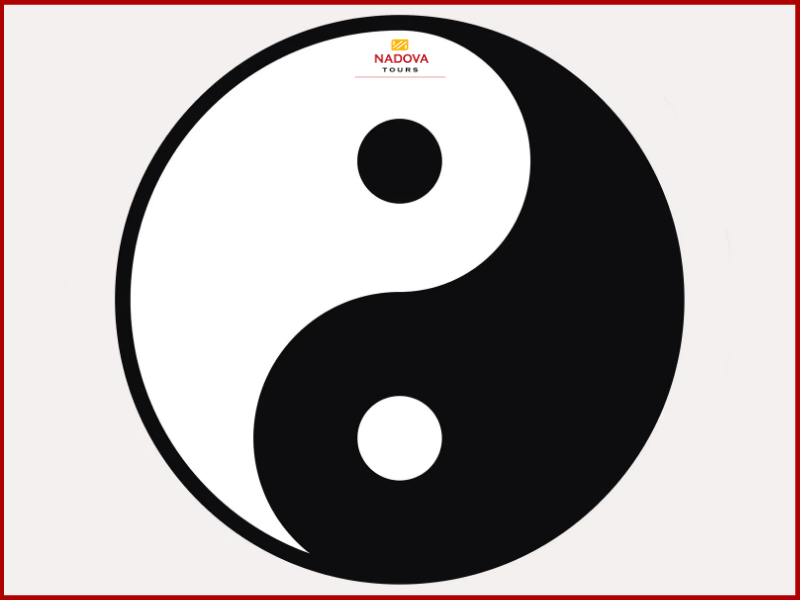
The Thermal Nature of Food
In Vietnam, food is also classified based on its thermal nature: is it "cooling" (âm) or "warming" (dương)? This concept, borrowed from Yin-Yang theory, guides how ingredients are combined for balance and well-being.
- Cooling foods (âm): leafy greens, cucumber, seafood, mung beans
- Warming foods (dương): ginger, garlic, chili, red meat
Eating according to your body's needs and the season is a key principle in Vietnamese food culture. For example, seafood (considered cooling) is often cooked with ginger (a warming ingredient) to balance the internal energy of the body. On a hot day, you might eat canh chua (sour soup with fish and tamarind) to cool down. On a cold day, a warming bowl of bún bò Huế (spicy beef noodle soup) provides heat and energy.
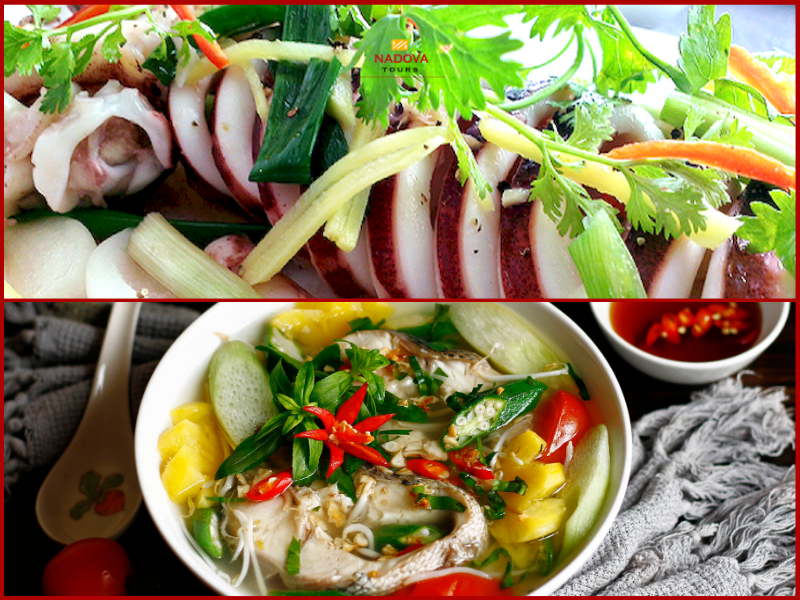
The harmony of the Five Elements
The Five Elements is an Eastern philosophical theory that explains the processes of formation, transformation, and interaction of all things in the universe through five basic elements: Metal, Wood, Water, Fire, and Earth. Each element has its own properties and always interacts and transforms with each other in nature, society, and humanity, both moving and maintaining balance.
Kim (Metal): Represents metal, white color, spicy taste, West direction, hard, strong element.
Mộc (Wood): Represents trees, green color, sour taste, East direction, growth, fertility element.
Thủy (Water): Represents water, black/dark blue color, salty taste, North direction, flexible, soft element.
Hỏa (Fire): Represents fire, red color, bitter taste, South direction, passionate, transformation element.
Thổ (Earth): Represents earth, yellow/brown color, sweet taste, Central direction, nurturing, steadfast element.
When combining these groups in a meal, Vietnamese people achieve the balance of yin and yang and the harmony of the five elements, creating maximum benefits for health and culinary experience.
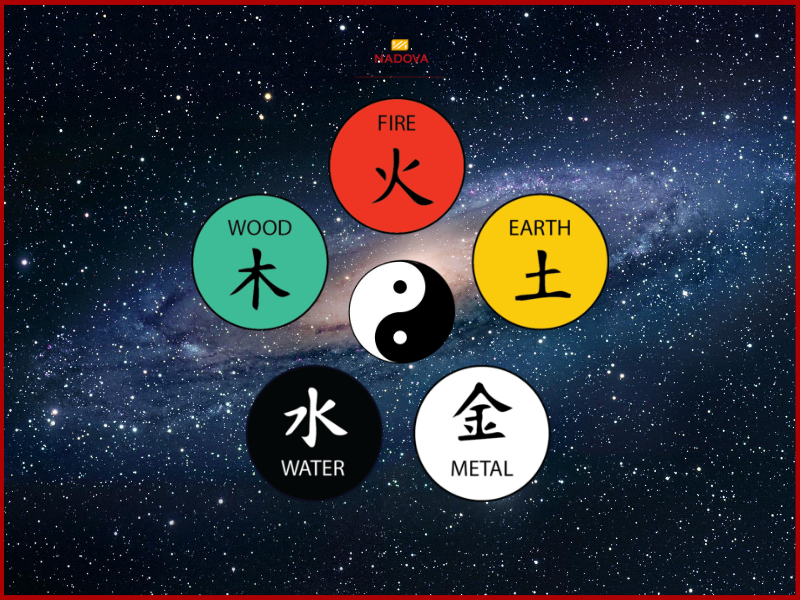
2. Must be FRESH and HOT
Must be FRESH
In Vietnam, you can probably find outdoor markets in every living area. Since this is the old, traditional way to sell products, Vietnamese people’s top priority with ingredients is fresh, raw material processing in front of them. Food ingredients are chosen for freshness; vegetables, herbs, meat, and seafood are bought daily and prepared immediately to preserve their natural flavors and nutrients.
One of the standout features of Vietnamese food is its emphasis on fresh, local ingredients and minimal processing. Meals are often loaded with raw herbs, fresh vegetables, and lean proteins. Herbs like mint, basil, coriander, and perilla are added fresh, not cooked, preserving their aroma and nutrients. Sauces are flavorful but used sparingly, and oil is never excessive. There are some common things in Vietnam you’ll find:
- Vegetables are usually lightly cooked or raw.
- Meat is often marinated with natural ingredients like lemongrass, garlic, and shallots.
- Fresh herbs like mint, coriander, basil, and perilla
- Pickled vegetables made at home
- Fish sauce enhanced with lime, sugar, and chili
- Light broths instead of heavy cream-based soups
Every Vietnamese meal feels fresh, light, and vibrant - a signature of the cuisine. Joining Vietnam Customized Tours, you can visit some outdoor markets to see how people in Vietnam sell meal ingredients, watch people choosing their stuff and try Vietnamese dishes, which focus on freshness. This not only keeps the cuisine light and healthy, but it also celebrates Vietnam’s agricultural bounty and regional diversity.
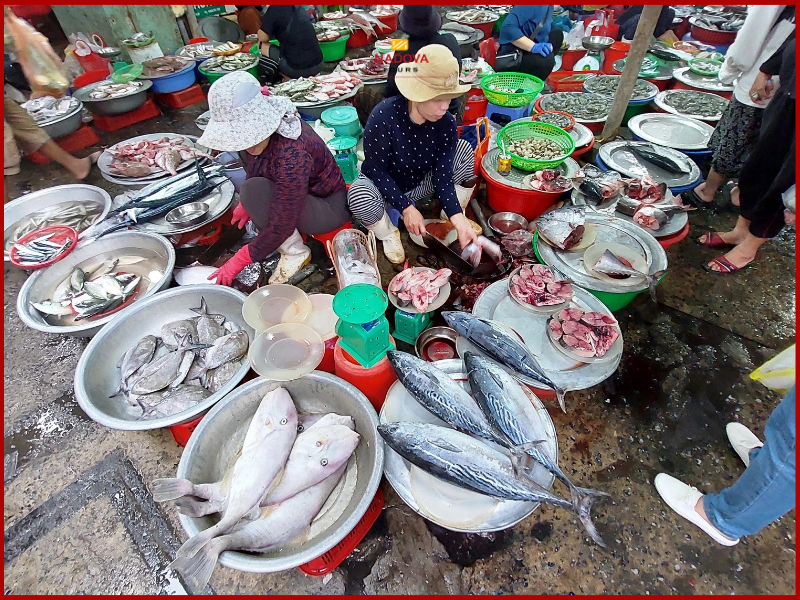
Must be HOT
Vietnamese said, “Phải ăn nóng mới ngon,” which means “The food served hot is the best, and you must eat it when it still has temperature.” This is Vietnamese people’s belief through generations, becoming their natural reflex whenever they mention food & cooking.
Vietnamese food is not always spicy hot but temperature-hot. Noodle soups like phở or bún bò Huế must be steaming. The broth is often simmered for hours, and it's meant to be enjoyed piping hot so the flavors really bloom and the textures stay perfect.
In Vietnam, if your food isn't both fresh and hot, it’s probably not being served right.
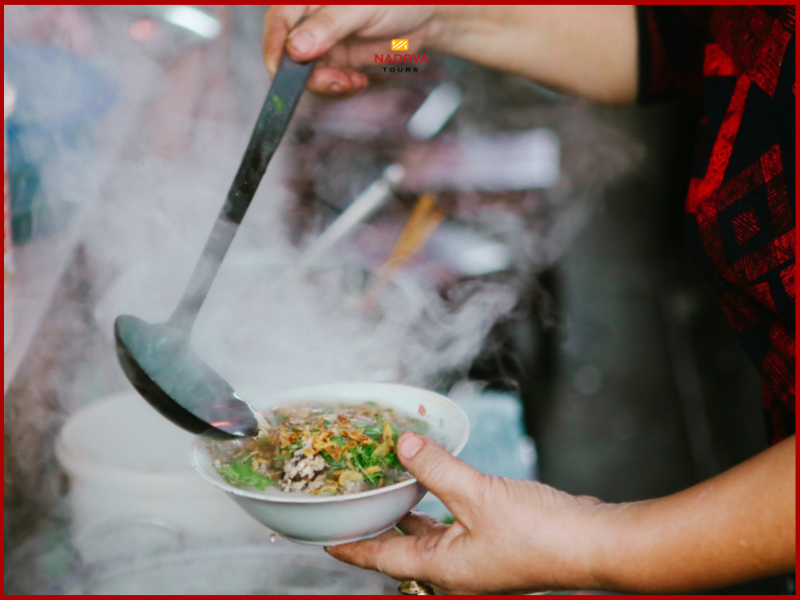
3. Rice Is Life
Rice (gạo) is the soul of Vietnamese cuisine. It’s more than just a staple, it’s a symbol of life, sustenance, and cultural identity.
Vietnamese people consume rice in many forms:
- Cơm – steamed white rice (served with every meal)
- Phở – flat rice noodles in broth
- Bún – thin round rice noodles
- Bánh tráng – rice paper used for spring rolls
- Xôi – sticky rice, both savory and sweet
Each region of Vietnam has its own unique way of preparing and serving rice-based dishes. From cơm tấm (broken rice) in the South to cháo (rice porridge) in the North, rice is a versatile and beloved foundation of the cuisine.
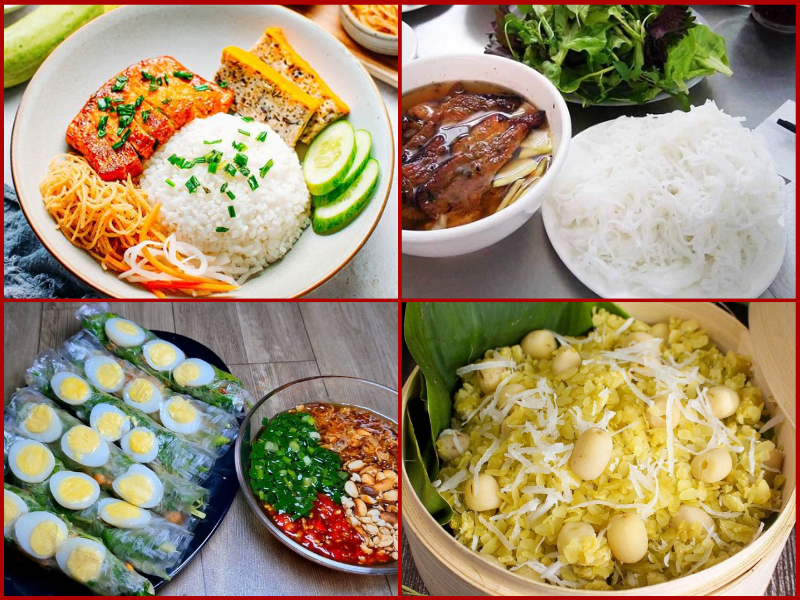
4. Seasonal and Regional Cooking
Vietnam stretches over 1,600 kilometers from north to south, which means climate, agriculture, and food availability differ by region, and so does the cuisine. The diversity of Vietnamese food reflects the diversity of its people and landscapes.
Northern Vietnam:
- More subdued flavors
- Use of fish sauce, lime, and fresh herbs
- Famous dishes: Phở Hà Nội, bún thang, nem rán
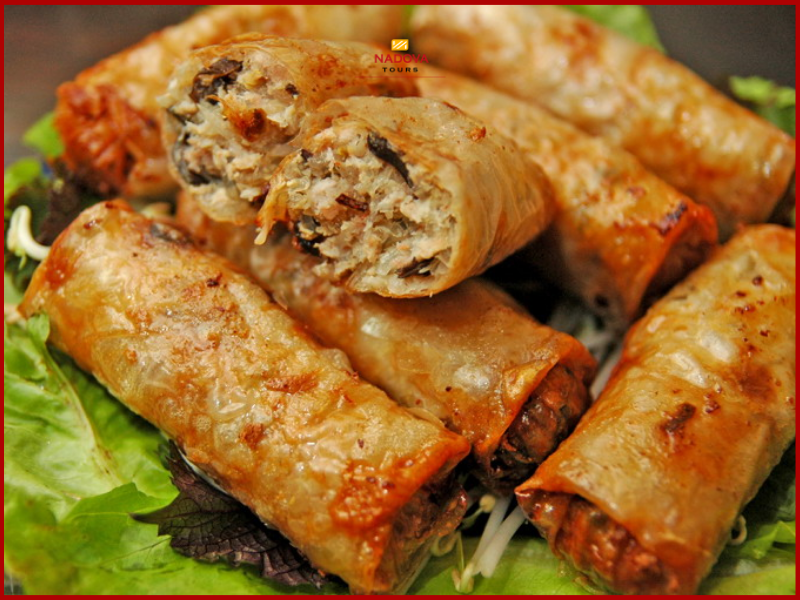
Central Vietnam:
- Spicier and more complex food
- Smaller portions, artistic presentation
- Famous dishes: bún bò Huế, mì Quảng, bánh bèo
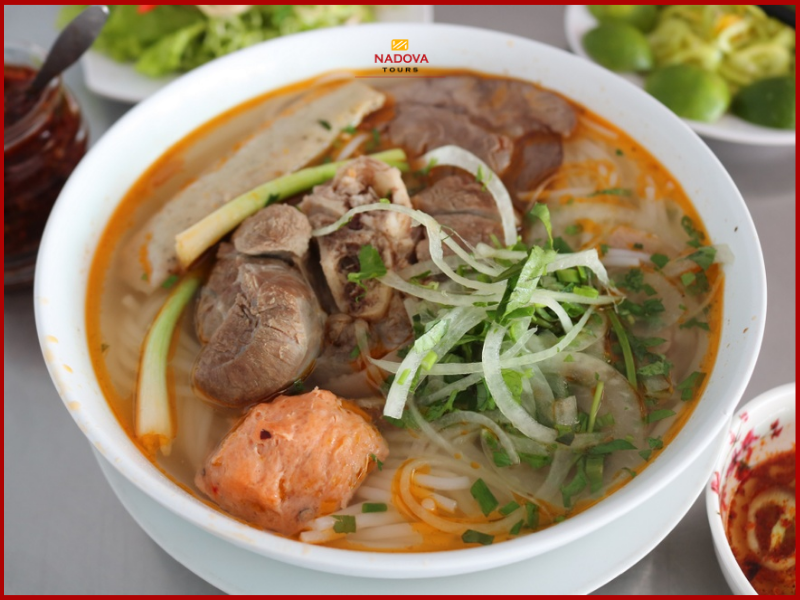
Southern Vietnam:
- Sweeter, richer flavors due to coconut milk and sugar
- More tropical fruits and herbs
- Famous dishes: hủ tiếu, cơm tấm, gỏi cuốn
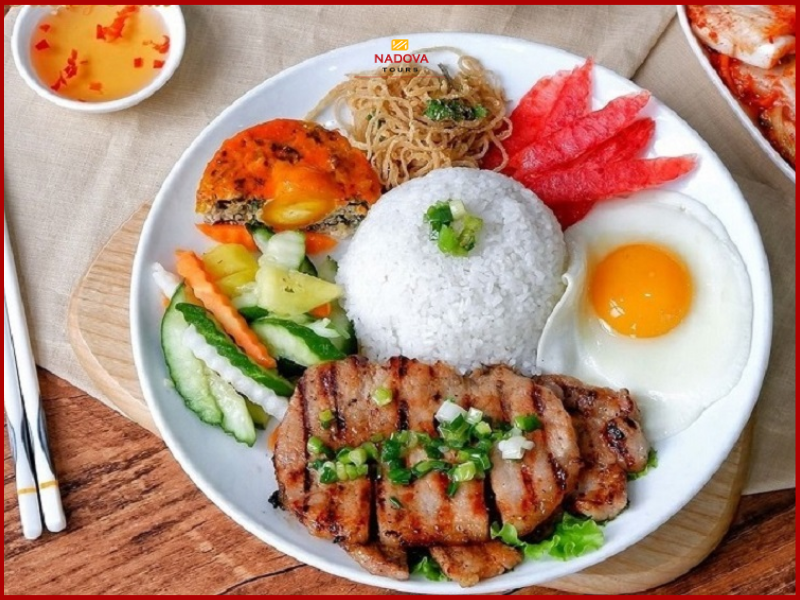
5. Dipping Sauces & Customization
A unique feature of Vietnamese meals is the use of dipping sauces — especially nước chấm, a tangy mix of fish sauce, lime juice, sugar, chili, and garlic.
Rather than being pre-seasoned heavily, many Vietnamese dishes are served plain and customized at the table. Diners add herbs, chili, lime, or sauce to match their personal taste.
- Add basil and mint to phở
- Dip grilled meat in nước mắm
- Mix lime and chili into bún thịt nướng
Vietnamese food is interactive, that everyone at the table builds their own perfect bite.
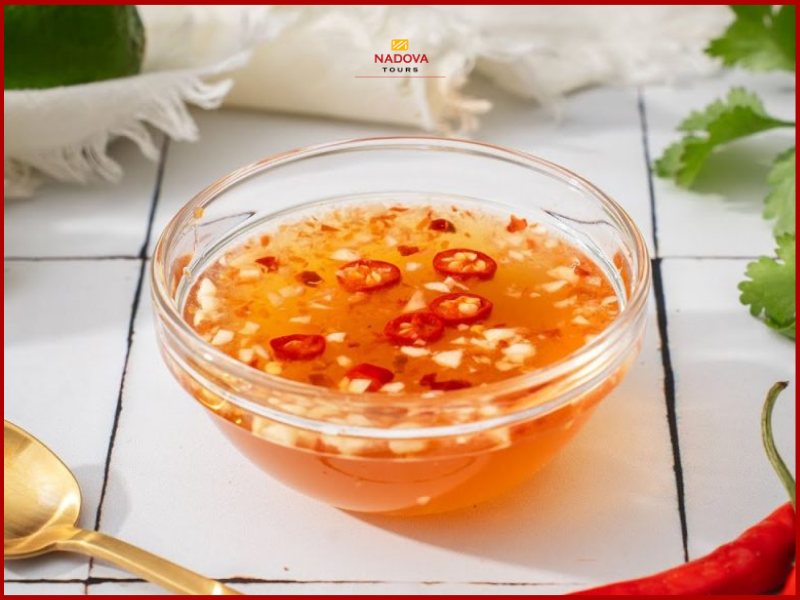
6. The Social and Cultural Role of Food
Food in Vietnam is more than nourishment — it's about community, family, and tradition. Meals are usually shared and eaten together. It’s rare for someone to eat alone, and sitting down for a meal is seen as a way to bond and show respect.
Vietnamese meals are often served family-style, with several dishes placed in the center for everyone to share. Each person has their own bowl of rice and uses chopsticks to take food from shared plates. This encourages a sense of community and connection. It’s common to wait until everyone is seated and ready before starting the meal. A simple phrase like “Mời mọi người ăn cơm” (inviting everyone to eat) is said before eating. This polite gesture shows gratitude and consideration for others.
During festivals, weddings, funerals, and ancestor-worship rituals, food plays a symbolic role. Certain dishes are prepared specifically for Tet (Lunisolar New Year), such as bánh chưng (square sticky rice cakes), symbolizing earth and prosperity.
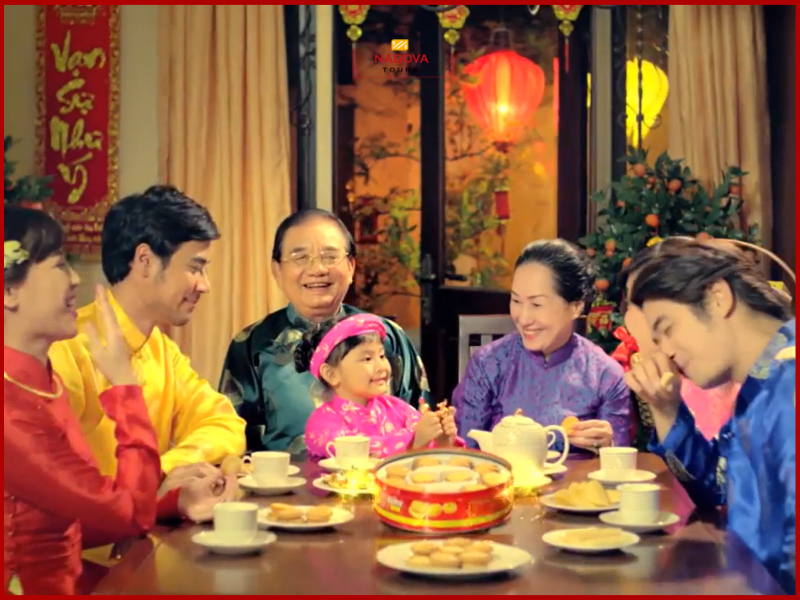
Ready to Taste Vietnam?
Vietnamese cuisine is more than just food, it's a journey through the country’s history, cultural, geography, and soul. From the balance of flavors to the deep cultural values behind every meal, exploring Vietnamese food is one of the most enriching ways to understand the heart of Vietnam. Whether you’re enjoying street food in Hanoi, savoring spicy dishes in Hue, or dining riverside in the Mekong Delta, every bite tells a story.
Click here to design your Custom Vietnam Tour, discover Vietnam not just through sightseeing, but through authentic culinary experiences tailored just for you. Taste, learn, and connect in Vietnamese way!
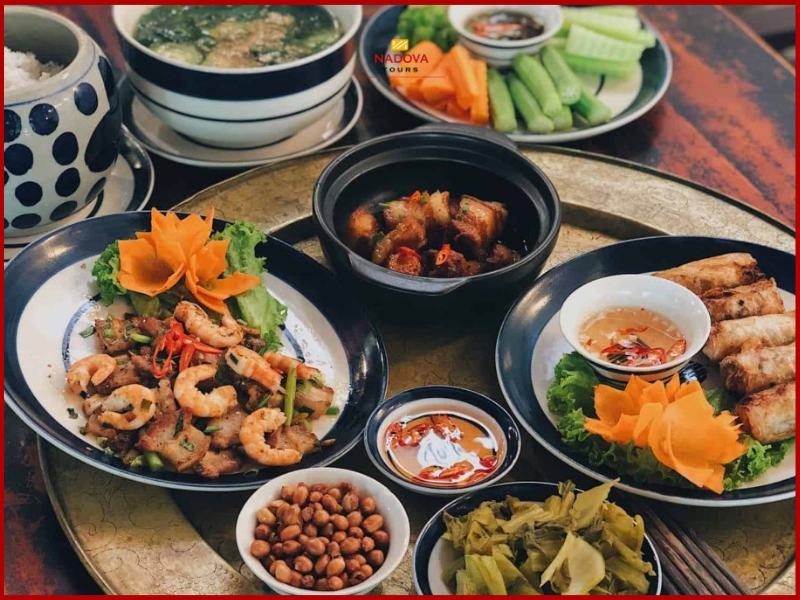
SEE TOUR: All Around Vietnam 11 days HOTLINE: +84 98 123 7915 EMAIL: info@nadovatours.com ADDRESS: The 4 floor, 59 Xa Dan street, Dong Da district, Hanoi, Vietnam |
Recent Posts
- Chasing the Winter Sun: The Best Beaches to Visit in Vietnam This December
- Hoa Lo Prison – A Glimpse into Hanoi’s Living History
- Cu Chi Tunnels: Step Inside Vietnam’s Underground World
- Main Principles of Vietnamese Food You Should Know
- Is It Safe to Travel to Vietnam in 2025? A Complete Safety Guide for Travelers
Recent articles
- Chasing the Winter Sun: The Best Beaches to Visit in Vietnam This December
- Hoa Lo Prison – A Glimpse into Hanoi’s Living History
- Cu Chi Tunnels: Step Inside Vietnam’s Underground World
- Main Principles of Vietnamese Food You Should Know
- Is It Safe to Travel to Vietnam in 2025? A Complete Safety Guide for Travelers
- Exploring Life on Cambodia’s Floating Villages of Tonle Sap Lake
- Top 5 Street Food Dishes in Hue Imperial City
- Family Travel in Vietnam: Best Places and Tips for Traveling with Kids
- Top 3 Tailors in Hoi An for Your Perfect Outfit
- 5 Reasons Why International Tourists Want to Return to Vietnam
Tags
Support Online

Being the locals, we know the true value of our land. We always listen and arrange everything as your desire. Please kindly send us whatever about your trip, we will send you best offers quickly.





